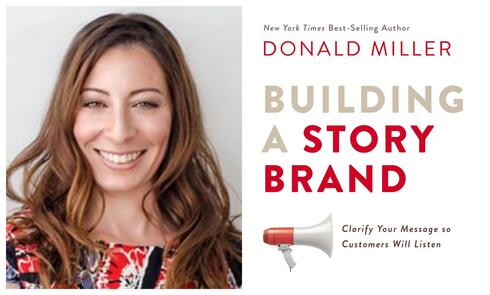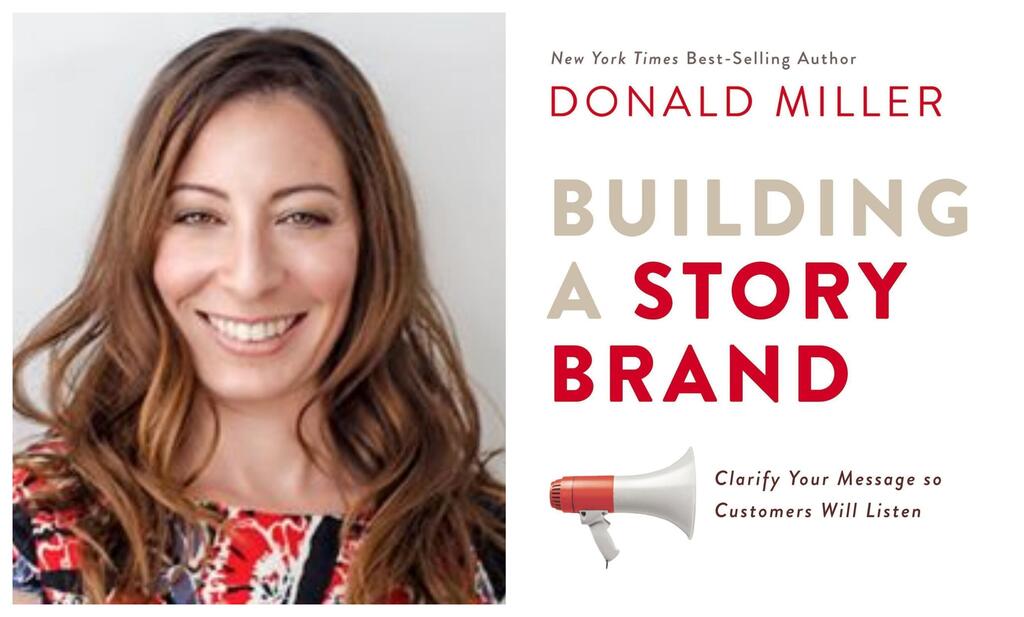
BilbioTech
CTech’s Book Review: Maximize your marketing with stellar storytelling
Jenny Drezin, VP of Communications at Practicum, shares insights after reading "Building a StoryBrand: Clarify Your Message So Customers Will Listen” by Donald Miller
Jenny Drezin is the VP of Communications at Practicum, which offers online part-time coding bootcamps. She has joined CTech to share a review of "Building a StoryBrand: Clarify Your Message So Customers Will Listen” by Donald Miller
Title: "Building a StoryBrand: Clarify Your Message So Customers Will Listen”
Author: Donald Miller
Format: Book
Where: Home
Summary:
In a world of information overload, storytelling is critical to help brands succeed. However, most companies talk about themselves, rather than tell a story that matters to their audience. This is why marketing is often a money pit, filled with confusing and noisy messages, easy for people to ignore. The key to making customers stop in their tracks and listen is to make the story all about them. The Storybrand method enables brands to craft captivating stories that compel customers to actually care about what they have to say.
Important Themes:
Most marketing efforts fail because the message they convey is too complicated. Stories sell your goods or products because they are a “sense-making mechanism”, a tool to organize information easy for people to digest. Every good story follows a basic formula, which businesses can similarly adapt to engage potential customers: The main CHARACTER strives for something but encounters a PROBLEM in order to achieve it. A GUIDE then offers them a PLAN, which compels them to take certain ACTIONS, helping them to avoid FAILURE and enjoy SUCCESS.
As part of this formula, businesses should make their customers the hero of the story–not their own brand. The customer’s pain points are the “villains” or “bad guys” in the story, which must be overcome. Problems make the story interesting because no one wants their own story to end badly–we all wish for a happy ending! Rather than talking about themselves, businesses should think about how their product or service can “vanquish the villain”-- and demonstrate how their customers' lives will transform as a result. When businesses focus on solving pain points, customers feel “validated” and–in turn–are more likely to listen to what they have to say. By telling a compelling story in this way, businesses can cut through “information overload” and ensure that their messages get heard–not ignored.
What I’ve Learned:
As entrepreneurs, marketers, or communications experts, it's tempting to explain why we're proud of our product and technology and demonstrate how it's different or better than the competition. We’re compelled to highlight as many features and benefits as possible. This is how we’ve been trained to interact with potential investors and partners. But many entrepreneurs don’t know how to explain what they have to offer. That’s because selling to customers–particularly in a B2C context–requires a different type of story: Making the story all about your customer requires a distinct mindset–more humility and the ability to truly empathize with another person–to put yourself in their shoes.
In addition to changing my mindset, this book helped me think about cinema, literature, and theater in a different way: It is fascinating that the culture we enjoy most–from classic films to TV shows–not only represents enjoyable pastimes but also serves as model stories for marketers and communication professionals. The ability to analyze such stories, to literally understand their “winning formula” - and how it has stood the test of time – is priceless when creating marketing and communications campaigns. In that sense, this book challenges marketers to “up” our creativity to create messages that truly resonate. As a communications professional, this book helped me rethink and refine my approach to storytelling.
Critiques:
One critique of the book is that it focuses only on the storytelling process, rather than whether the story is reaching the right audience. The best stories in the world won’t be effective without analyzing our audience correctly.
Who Should Read This Book:
Entrepreneurs, small businesses, marketers, PR strategists–basically anyone with a product or service to sell, or who helps others to market and sell, can gain value from this book.














